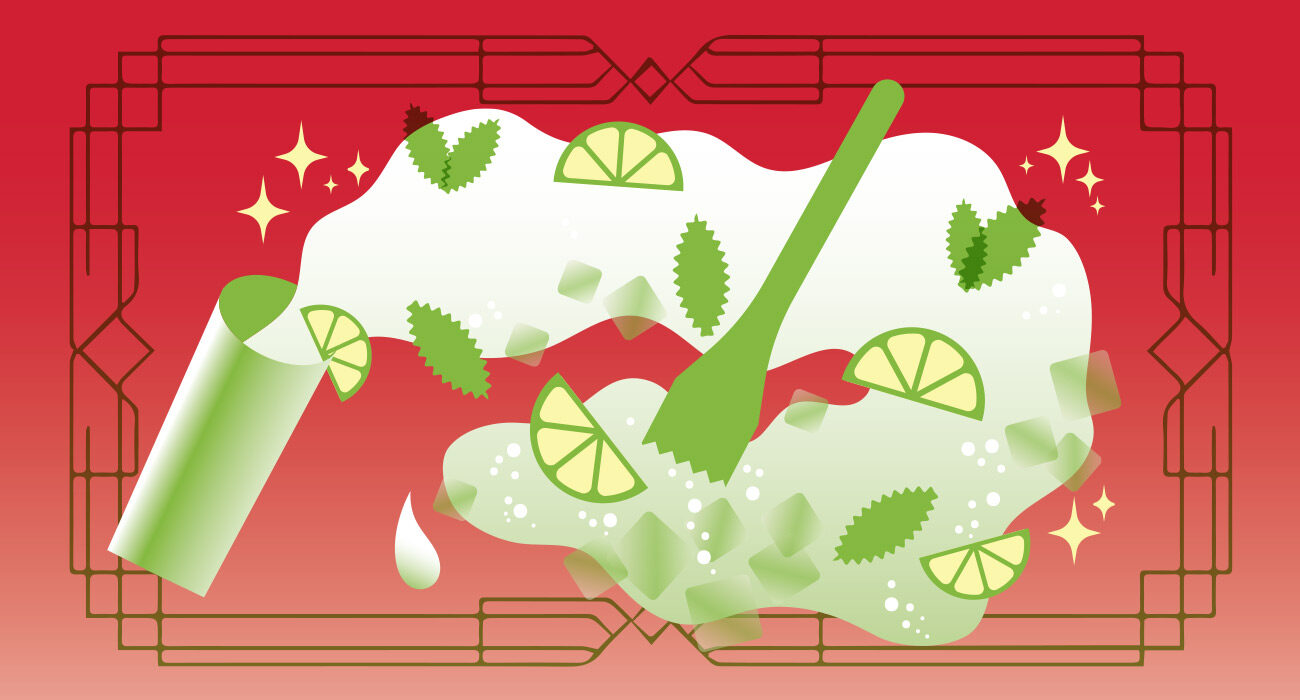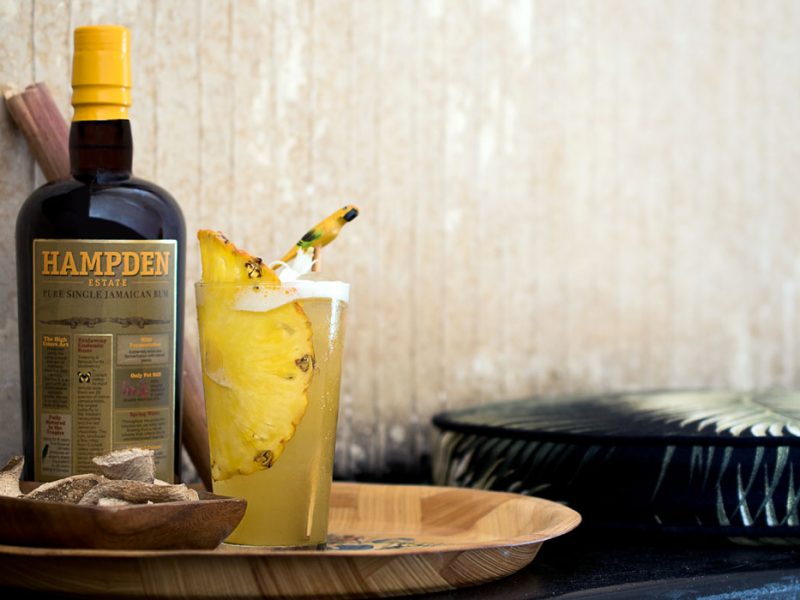On October 17, 2022, we held our last Rum Reader event of the year, returning to our old stomping grounds of Chicago with a new team, a new venue, and a new mission: to meditate on the Mojito.
At the essential California Clipper, an astute crowd was assembled for an especially introspective discussion on the meaning of this classic drink and its many permutations. Taxonomically related to that favorite, the Daiquiri, the Mojito is another drink of Cuban origin with rum, lime, and sugar, adding mint and (perhaps) soda water, plus a process all its own. Or a few processes. Let’s let the experts tell it their way. They were:
Julieta Campos, director of beverage and bar operations, The Fifty/50 Group.
Davíd León Jr., Chicago’s own Artsy Bartender.
Argelia Martinez, founder of Vida Mia Cocktails.
Paige Walwyn, bartender at Queen Mary Tavern.
Ben Schaffer was the moderator.
Our stalwart spirit sponsors were Bacardí, Convite, Denizen, and Don Q. Their support for our cocktail confabs, as always, is gratefully acknowledged.
California Clipper impresario Kristina Magro and bartender Richard Pizarro modulated many Mojitos matching our multitude of moods.
This transcript has been edited for length and clarity. — Ed.
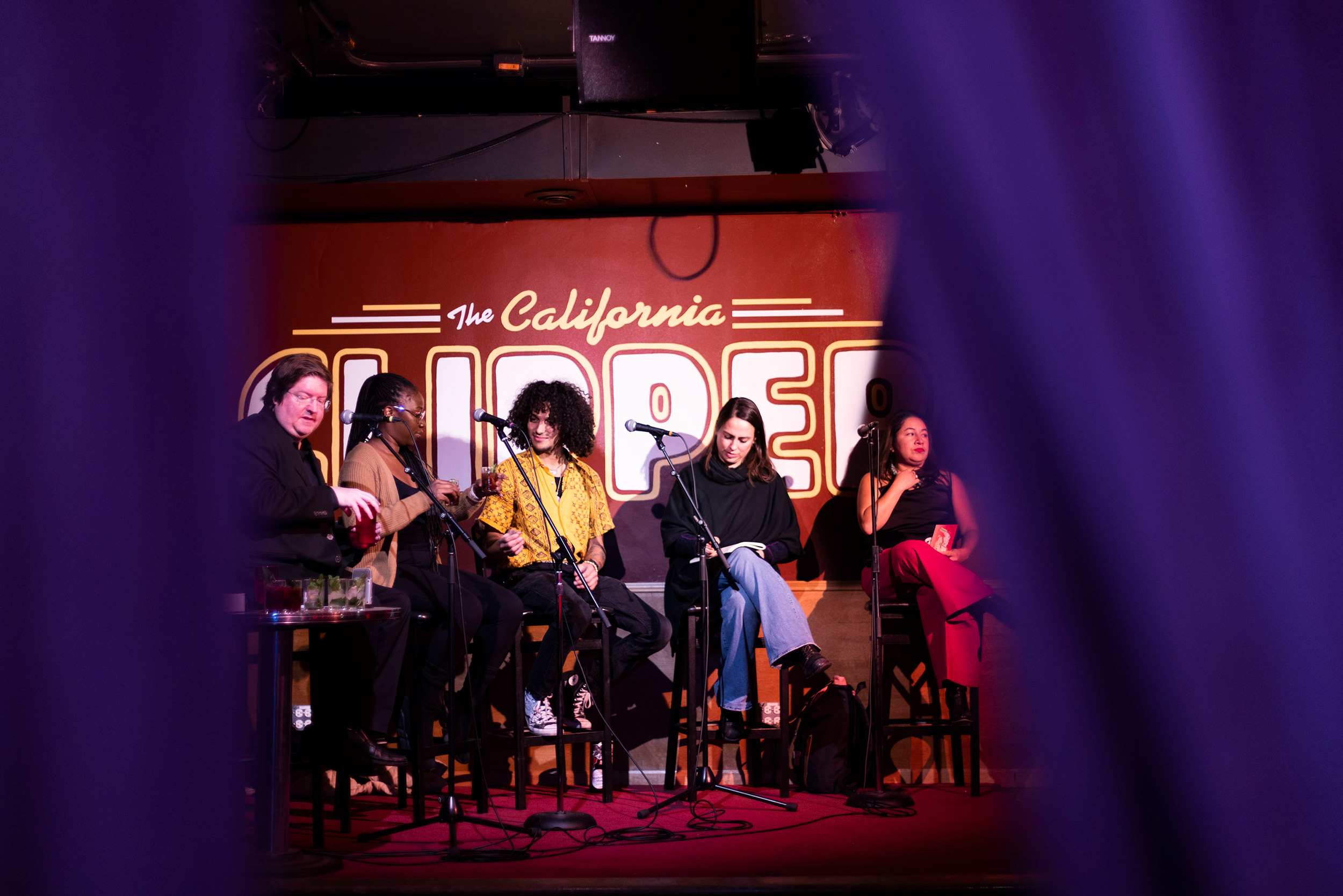
Prep
Ben: We know that the Mojito adds mint to that trinity of rum, lime, and sugar. Sometimes soda water. We’re going to have three drinks with soda water, one without. I think it started out without it because the drink really predates soda water. It also really predates ice, but we weren’t willing to go that far because this is America, and we need ice in our cocktails at all times. But I want to ask the panel, what does something need to be a Mojito?

Julieta: Once I thought, “This a lot of prep.” The first Mojitos that I came across I didn’t like very much, to be honest. Now I love Mojitos. I approach Mojitos as a category, and to me that’s super important. You’ve got medicinal aspects, like mint that dates back to the Bible. The Greeks have a goddess devoted to mint, and in Spanish it’s yerba buena, the good herb. Then they turned it into the Creole Cocktail which has a couple dashes of Angostura, also medicinal. So, to me it starts off medicinal and becomes a category. I’d put it next to the Old Fashioned.
Ben: It may even predate the Old Fashioned. It’s so lost in the mists of time that we don’t know how old it is. But Old Fashioned is early nineteenth century and I think this has got to be hundreds of years older than that.
Davíd: Oh, a hundred percent. I think it goes back to what Julieta was saying, the medicinal aspects of things. There’s a bunch of ingredients from the Caribbean. And if it was in the Caribbean, more than likely it will stem from South America. People on the islands have been using medicinal drinks for hundreds of years, way before the Spanish arrived.
Argelia: I want to expand what Julieta said about yerba buena. In my mother’s garden, she grows tomatoes, cucumbers, yerba buena—it’s like a weed everywhere. I think of the Mojito as an easy summer drink where you can start with its easiest form and then pick your own chapter. The Mojito is something I can make from my mother’s garden and still also have a connection to its Cuban roots.
Paige: I completely agree with that. For me, Mojitos are just something very simple, super classic, easy drinking, refreshing, and just a really crushable cocktail. But my introduction to Mojitos was actually kind of strange. I went to a traditional college in a college town and there were a lot of shitty bars, which means, as soon as I turned twenty-one, I drank a lot of shitty Mojitos. So, for the first couple of years, that’s what my mind thought of, until I started drinking great Mojitos, with great different types of rum, great fresh mint. You can see how this cocktail is so versatile and so delicious in its true, unique form.
Ben: What were they doing with the shitty ones?
Paige: You get super syrupy, sweet Mojitos. But then you have all of these different types of flavored Mojitos, but not in the way that you see here on our menu where it’s done with care and thought. This is more, “We’re appealing to your college palate, and we’re going to put in some mint and whatever else we can find.”
Davíd: A lot of sugar. I had the same introduction when I started bartending, in different bars, usually surrounded by colleges. So, a lot of shitty Mojitos as well.
Ben: Okay, let’s move on to delicious Mojitos.
Synergy Mojito by Paige Walwyn
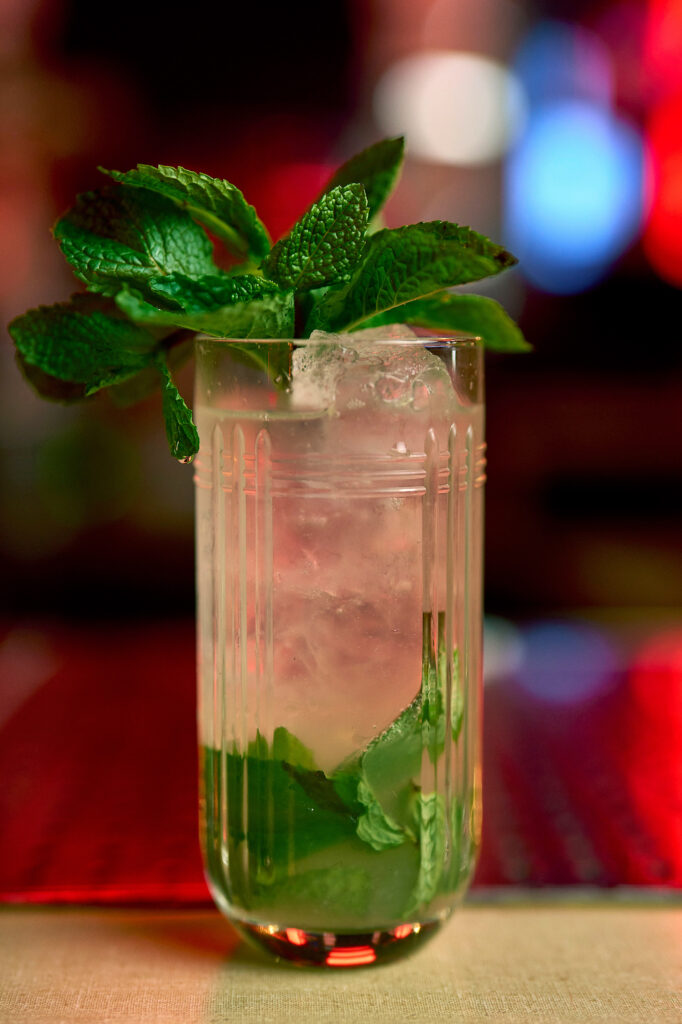
1¼ oz Don Q Cristal Rum
½ oz white Pineau des Charentes
½ oz lime juice
½ oz pineapple juice
¼ oz simple syrup
Medium handful of fresh mint leaves
Soda water
Muddle mint and syrup in shaker. Add other ingredients and ice cubes. Shake. Fine strain over ice cubes. Top with soda water and garnish with mint sprig.
Familiar and Unusual
Paige: With any drink that I make, while it might use different ingredients, I want it to feel familiar when you drink it. If you drink this, you know it’s a Mojito. It doesn’t seem too out of line. I used some ingredients that don’t necessarily get as much shine but I think are really cool. For example, I really wanted to use Pineau des Charentes, a French aperitif which is a Cognac-based fortified wine, that you don’t see as a cocktail ingredient very often. It’s semi-sweet and has vanilla notes. I thought that would pair nicely with the mint and pineapple which were the drink’s tropical notes. It’s topped off with soda for that lengthener, to give it a bubbly quality and make it approachable and familiar.

I used Don Q on this, and I was super happy with that because it’s a very classic rum. It’s the perfect rum for when you’re making a Mojito, so it’s a perfect base for any ingredient that you’re going to add to it.
I went back and forth on the sweetness level for this. I tried to make it a drier style Mojito because I always like to make drinks that people will drink one, two, three, four of.
Julieta: I like how the pineapple doesn’t overpower it. It’s just a hint that you feel in your palate.
Ben: Talking about that, I think it’s interesting to compare the Mojito with the Daiquiri—they have certain similarities, common ingredients, common history. But the Daiquiri’s become beloved by craft cocktail bartenders. Whereas the Mojito’s probably one of the most popular drinks on the planet, but it hasn’t gotten that level of attention from the craft community. I wonder if anyone has thoughts about why that might be, other than perhaps being burned by too many shitty bars doing them.
Julieta: I think it goes back to the point that you made about there being a misconception that bartenders dislike making Mojitos due to prep. So people put it out of their mind as something to order. Even if they love it out in the open or secretly love it, they don’t want to be, “Hey, I’m that asshole ordering a Mojito.”
I don’t have a problem making Mojitos, but I’ve definitely heard that being something that people think. I’ve had a lot of people come into bars over the years and they’re like, “Oh, I’m sorry. Can you make a Mojito?” And I’m like, “Yeah, totally! Of course.” Whereas I think with the Daiquiri it’s the same, the three ingredients, but I feel like people don’t have that same idea that it’s so incredibly difficult to make.
Davíd: Back when we were using sour mix and all the premade ingredients, a lot of tropical cocktails took a big hit. The Daiquiri was definitely one of them, and I think that as bartenders started finally solidifying how you make a good Daiquiri, it started gaining popularity. I don’t think that same thing has been done for the Mojito quite yet, because I know we still have bartenders who like to shake the Mojito and then fine strain it to get all the mint bits out, even though that’s really part of the cocktail.
I can order a Daiquiri here at the Clipper or make a Daiquiri at my bar and they’re going to taste relatively the same. We know how to make a Daiquiri, but we haven’t really found that yet for the Mojito. Do I do fresh sugar or is it okay if I do a syrup? Am I going to shake it or am I going to build it? Is it crushed ice or is it cubed ice? We haven’t found that yet.
Argelia: I do classes and one of my guidelines is, “What’s the difference between shaking and stirring?” When you shake, there’s usually citrus involved, but that goes against the Mojito because it’s made to stir, it’s made to crush. It defies that guideline. We don’t have a consistent way to make it. But if you were to ask anyone from Puerto Rico or Cuba, it’s meant to be simple. It’s meant to be something that anyone can make as long as they have the ingredients. And that’s what makes it so delicious.
Ben: Again, because of its long heritage, the Mojito predates the shaker. There were no cocktails when people were making this, so there were no cocktail shakers. It’s something that you put together in a glass because that’s the technology that we had. But the way things come together when you shake it is different. The Mojito is not a Daiquiri with mint. The components come together differently, and I think that’s important to the result.
Julieta: Yeah, I’m a big fan of pressing the leaves. That was one of the big things that I saw when I came up at the Argentine bar, Barra Ñ, just up north from here—they were doing rounds and rounds of Mojitos. Sometimes twenty, thirty lined up. That’s a beautiful show. They would do granulated sugar. With that being said, it wreaked havoc on sinks, we all know that. But the bartenders would also wreak havoc on the mint, and you’d get these bitter, bruised pieces of mint. One of the things that I’m intrigued with is how you treat herbs with regards to “Can you cook it? Can you boil it? Can you press it? Can you muddle it?” You have to be more gentle with mint than you are with rosemary. And sometimes you see people treating them all the same.
With mint, with the Mojito, I’m all about pressing it. You want the oils, you don’t want any bitterness. And going back to why it may not be a super popular cocktail is you have to pay attention to your ice; you have to pay attention to your syrup. You have to pay a lot of attention to the mint. Now you’ve got all these other components. Whereas with the Daiquiri, you’ve got to worry about three ingredients, and really you just have to make sure that your lime juice is fresh.
Argelia: You should be treating your herbs gently. A light smack, releasing the oils lightly. Thank you for saying that.
Julieta: Yes, just back of the spoon against your Collins glass.
Davíd: That’s the approach I like to use, too. Storage is another thing—treating them all the same way can mean each herb ends up getting a little funky.
Julieta: I have to give a shoutout here to Peter Vestinos. That is one of the first things you learn from him—you pour your mint, you shock it, and you treat it like a bouquet of flowers. It lives in an inch of water, you’re not drowning it, it’s not some sort of Little Mermaid experience. Just the way you do with fresh-cut flowers, you just need an inch of water, and it’s warm. So, going back to American bartenders loving everything so cold, putting mint in tepid, room temperature water was different. It keeps it bigger and more alive.
Audience Member: I’ve heard stirring and shaking Mojitos. Does anybody prefer to swizzle?
Julieta: I swizzle. I press and then swizzle, yeah.
Davíd: Yeah, I’m a big fan of swizzling, period. If I get to swizzle, then I’m a happy bartender. And Mojitos, I think, shine really well when they are swizzled.
Ben: That would seem to help with coating the oils through the drink without damaging the leaves themselves, right?
Davíd: To avoid pulling the bitterness.
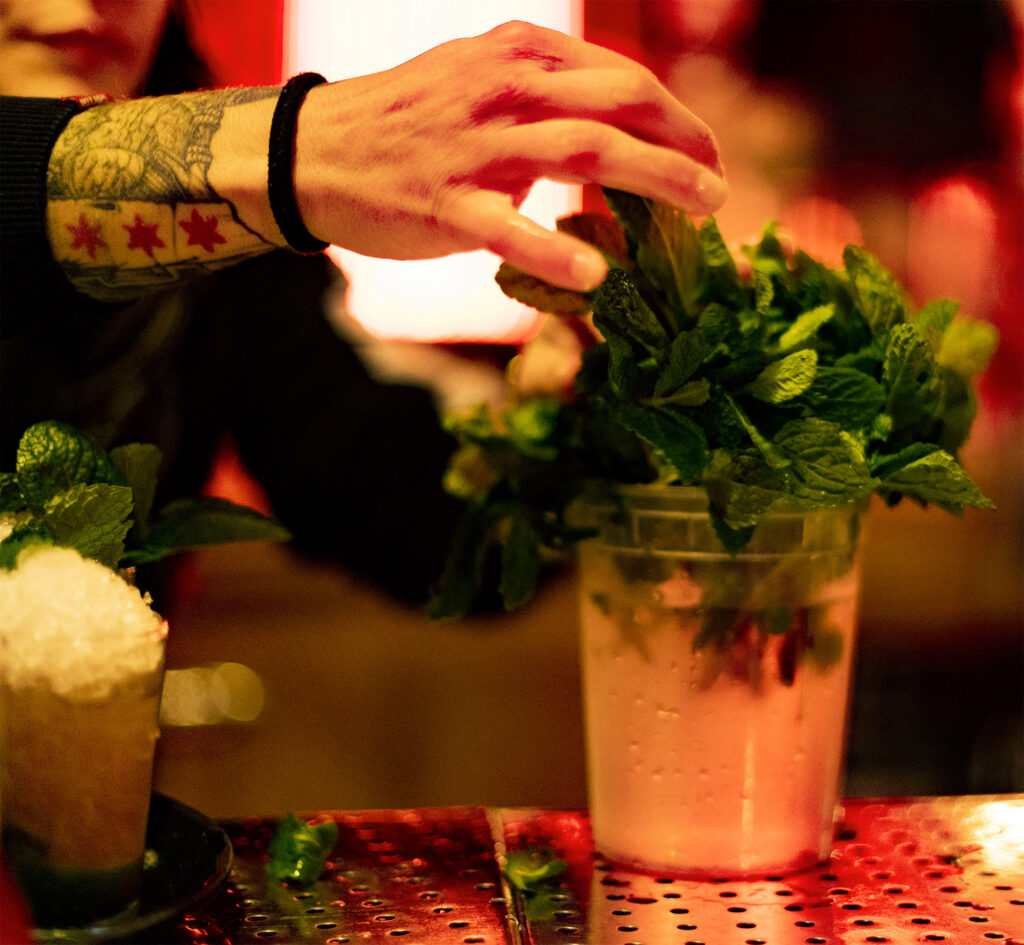
Home Mojitos
Second Audience Member: I would like to know, from each of you, what is your preferred way to make a Mojito if you’re at home making it for yourself?
Argelia: We all know we have to start with a long Collins glass. That allows you to build the drink within the glass. If I were at home, I would definitely use Demerara sugar cubes, because I like their granularity. I love having the lime bits stay within the drink, because when you bite into that burst, the drink is even cooler. I like to spank the herbs, so rather than swizzling, I spank the mint on the glass so that the glass itself gives me that aroma. Anything that allows me to use the five senses, I’m all in. Ice cubed and perfected just like the cubes of the sugar is even better. Then topping it with soda, the more natural the better. If I’m unable to get those herbs from my mom’s garden, most likely if it’s the winter, I’ll go to Tony’s. At a Mexican store, I can get them for $1.99 a bunch.
Julieta: I also think it’s important to have the right size glass and build it accordingly. I like a lot of mint. I like to see it; I love that we’re talking about the five senses. I like to press it on the side of the glass. I want that oil there. Granulated sugar is fantastic if I have access to it. Fresh limes, rum on top, and then swizzle and build it slowly.
For me, it’s so methodical. You add a little ice and you incorporate. You add a little more ice and then you incorporate again. You top it with soda water, and then give it a big bouquet. When I have the time and the opportunity, I do it slowly. It’s nice watching it come together. Maybe adding a little bit more of rum, you know, depending on how the week is looking. But, to me it’s a process. It’s a very slow process; intentional, when you have the opportunity.

Davíd: I agree about the slow process of things. When I build mine at home, I’m in the kitchen—myself, maybe some guests. We just went to the store, bought all the ingredients. We have some mint. With the limes I like to take a bit from how Brazilians make Caipirinhas, so I take out the pith and use the whole half of the lime. I muddle, with mint at the bottom, the lime on the top, then the sugar and the spirit. Muddle that in, give it a little stir, try to incorporate the granulated sugar. Add the crushed ice, swizzle it. Add some more crushed ice, put my bouquet next to where I’m going to be sipping. Taking my time, while chatting with friends, enjoying ourselves. It’s the direction I like to go in with making a Mojito.
Argelia: What music would you be playing?
Davíd: That’s a good question. I have a playlist ready called “Wepa”!
Paige: For my at-home Mojito, it goes back how there’s no standard way to make a Mojito. The way that I’d make a Mojito at home is different than the way I would make a Mojito at work because it all depends on the ice that I have available. But the bases would be very similar. I would probably use lime wedges, cut, diced up, maybe half a lime. Granulated sugar, rum. I would probably go the route of shaking. But I don’t muddle, just mint in shaker, quick shake and dirty dump, top with soda. If we’re talking about making it at the bar, then it depends on if I’m using crushed ice, Kold-Draft, whatever.
Agua de Jamaica Mojito by Argelia Martinez
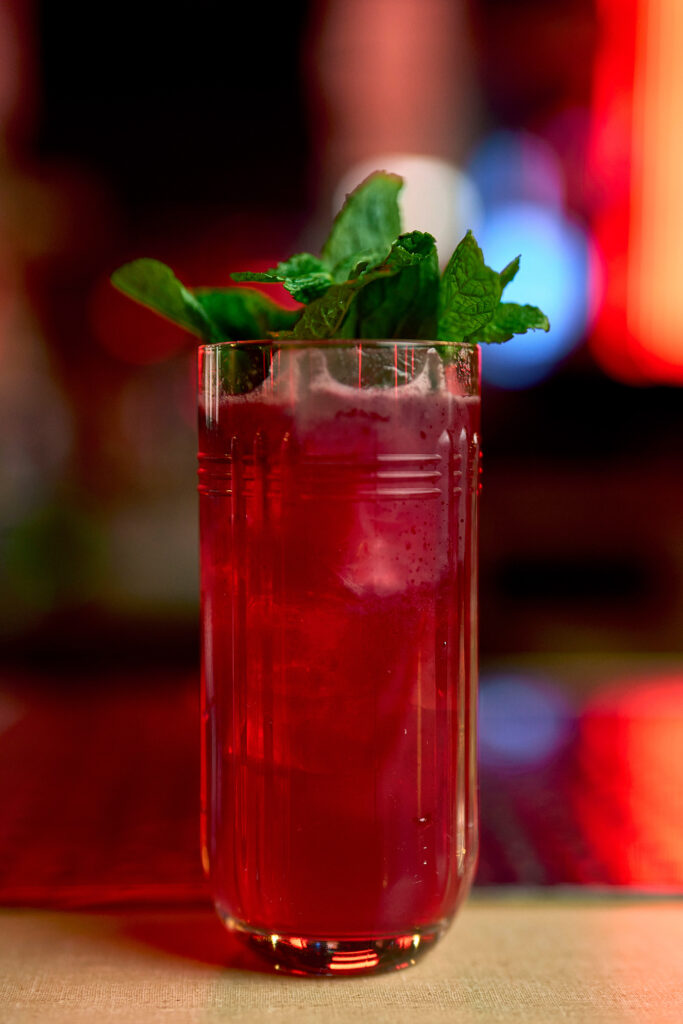
2 oz Denizen Aged White Rum
1½ oz hibiscus tea (see below)
¾ oz lime juice
2 Demerara sugar cubes
Mint leaves
Ginger beer
Muddle the sugar cubes with the mint and lime juice in a glass. Stir in the hibiscus tea and rum. Add ice cubes. Top off with ginger beer. Stir once to mix.
Hibiscus Tea
3 tablespoons dry hibiscus flowers
8 oz water
Boil water, add flowers. Cool and strain.
Pan-Caribbean Hibiscus
Argelia: I like to dig into history. I felt that the Denizen rum was an ode to people who wander, from different countries. Denizen rum is distilled in Jamaica and Trinidad, then it’s moved over to Amsterdam where it’s blended. That voyage is what inspired my drink’s use of hibiscus. Hibiscus is also something that’s traveled over the ages with people from Europe, India, and China. It’s a through-line for different cultures. Hibiscus is important to a lot of different cultures in the Caribbean, whether it’s known as jamaica or sorrel. I wanted to include that as a through-line with this drink, because it’s like rum in that it transcend cultures. It’s telling that story of where rum comes from.

I’m a Demerara sugar girl, so I will use it for lots of stuff including Old Fashioned and this drink. Ginger beer was a little unusual, but I liked the combination when I was trying soda water versus ginger beer. I thought, “I love the spice, let’s leave the spice in there.”
Paige: I love your drink because it’s very, very familiar to me. Going back to what you were saying, I’ve grown up drinking sorrel my entire life. My parents are from the West Indies and it’s something that they’ve made basically every Christmas since I existed—well, even before that. The flavor of hibiscus is very ingrained in my growing up in my family. So, I love this drink and I think that your use of ginger also compliments that really well. When you make sorrel it’s a spiced punch, so you have that clove, that cinnamon, that ginger, that spice that’s going in, and this reminds me of that, and I really like it a lot.
Julieta: The added component of spice is something that I’m really into. Not only the ginger, but when you add cinnamon and anise, it’s really dynamic. I think it actually deserves its own category—the multiple things that you can do with the versatility of hibiscus because it’s tart. When you introduce different things like mezcal, it’s a dynamic that reminds me of something that is meant to be kind of out of this world. But I love that it can transcend different cultures.
Ben: It sounds like most of the panel prefers granulated sugar in the home Mojito. But most of the panel did not do that in today’s recipes, so let’s talk about the pros and cons of syrup and granulated or cubes. Argelia, can you talk about why you chose the cubes?
Argelia: Since rum is from sugar cane, I like to connect that to the sweetener with a raw Demerara sugar. But I also realize that if you don’t have the right temperature, you don’t have enough sugar dissolving. So process is important. I crush the sugar in the glass first, but I think that’s a danger when you do it in mass production. At home, I’m safe with the Demerara sugar because I can still get the sweetness by swirling it, but that could be a problem if you’re doing drinks in a mass way. You might not get a Mojito that’s sweet enough and people might bring it back. So I see why simple syrup is used for producing a balanced drink.
Davíd: It’s about consistency. We’re creating a program, right? If you expect twenty people to make the same style of drink, the easiest way to do it is with haste. This many ounces of this syrup—it will be more consistent, so consistency is why we generally go the syrup route. But even though, as pioneers of flavor, we enjoy using the fresh sugar—with that grittiness to it and how it connects to the fresh juices and fresh herbs—I would say consistency is most important.
Mojito Tradicional by Davíd León Jr.
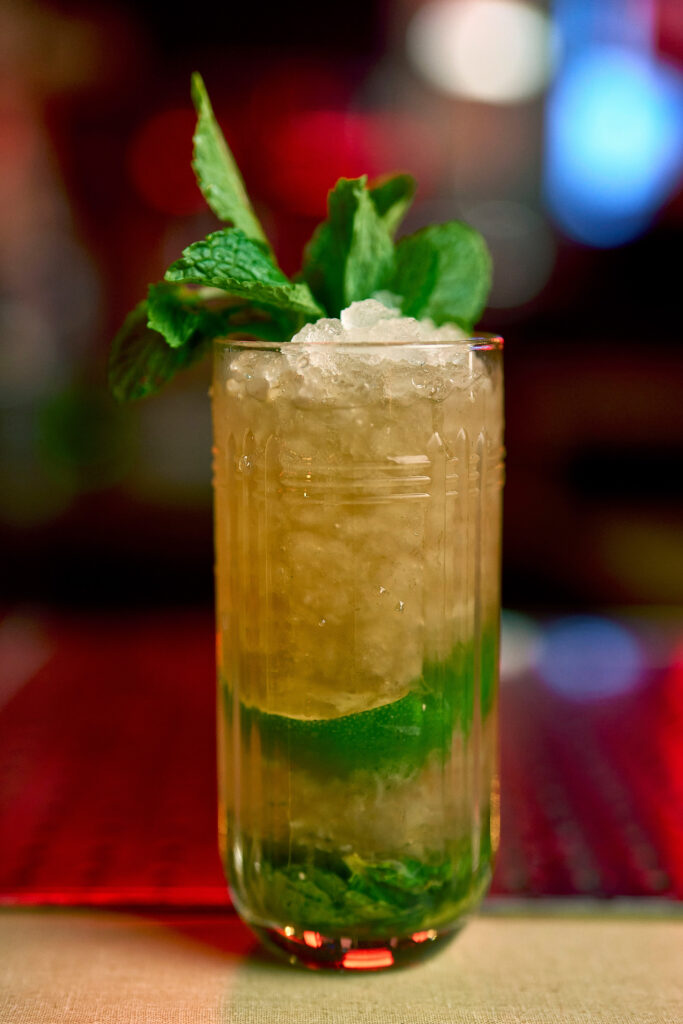
2 oz Bacardí Reserva Ocho Rum
¾ oz Medicamento Demerara Syrup (see below)
1 half of a trimmed lime
5 mint leaves
1 cilantro leaf
1 pinch of salt
Muddle syrup, lime, mint, and cilantro in a glass. Fill glass with crushed ice. Add rum. Stir with bar spoon. Add more crushed ice and garnish with a mint sprig.
Medicamento Demerara Syrup
10 g ginger, peeled and sliced
30 g cilantro leaves
20 g basil leaves
100 g mint leaves
1000 g water
1000 g Demerara sugar
Add the ginger and water to a pot and bring to a boil. Lower the temperature to about med-low. Add all herbs into a basket to blanche in pot for 15 minutes. Remove herbs and stir in sugar until dissolved. Strain, bottle, and let cool.
Ancient Medicine
Davíd: With this cocktail, I wanted to go in that traditional way. But I thought back to when they were first making the Mojito, the way things were being done way back then, a lot of the booze was medicinal, with herbs. Maybe like what the Tainos would do if they had a bunch of herbs.
For that I made a special syrup: a little bit of ginger, some cilantro, basil, and mint. A mix of herbs taking the cocktail in a medicinal direction. I wanted to incorporate herbs that can be found even today in Caribbean cooking.
The process of this cocktail, I noticed when I was playing with it, is very important. The process changes the cocktail immensely. For this one, I put everything in the glass, really muddling the lime to extract all the juices from it. Then I added a little crushed ice and the rum, swizzling it, then added more crushed ice.
Argelia: I was just going to say this is a real Mojito. This is a no-nonsense Mojito.
Davíd: I’m living my inner tio.
Julieta: This is a darker spirit like tios have when they’re playing cards and smoking cigars in the basement. They’re drinking darker spirits, at least in my experience, and they’re not really drinking a lot of sugar. That is what this reminds me of.
Argelia: I have nothing to add except it also is curing my cough.
Davíd: Medicinal.
Ben: This is the only Mojito tonight with aged rum, and I’m curious about the strong herbaceous quality. Are those two stronger flavors here to balance each other?
Davíd: The good thing with Bacardí Ocho, because of the style of rum that it is, it has a spice note to it. That goes with the syrup having that hint of ginger and spice to go with the herbaceous-ness. It was easy to play off the slightly sweet, slightly spicy notes that you get from Bacardí Ocho. But, just sip it. Sip, enjoy your evening, have a good time.
Ben: When you say “traditional,” you’re not talking about traditional in a bar context, you’re talking about traditional in history as a whole. I thought that was an exciting way to look at it. Accordingly, there’s no soda water because there was no carbonation in this timeframe.
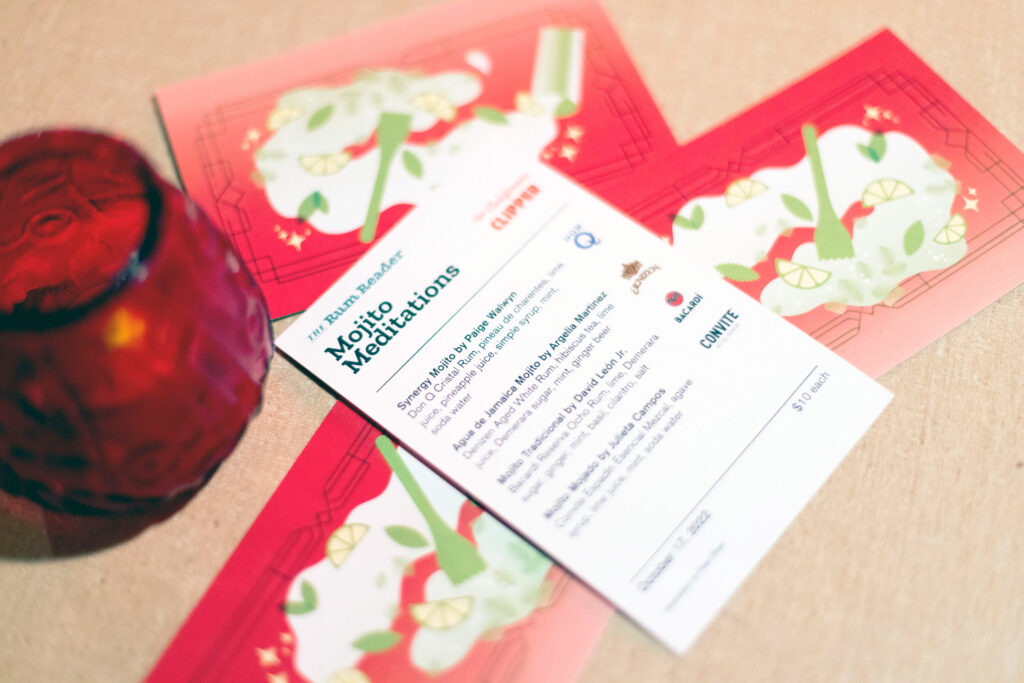
Paige: If I’m planning on including any kind of carbonation or soda water is dependent on what kind of ice I use. For example, with my drink, I did it over Kold-Draft cubes because the soda will help add to the dilution. Whereas something over crushed ice, I probably wouldn’t use any kind of soda water because you’re getting a lot of that dilution through that crushed ice, which if you also add soda to, you’re overdiluting your drink and without getting the effervescence that you’re looking for with crushed ice. It’s not necessary.
Davíd: I think that’s a good point. It’s always the dilution, right? I personally enjoy my Mojitos more with crushed ice, because it’s still going in that traditional direction. If they were given a big block of ice, what’s the easiest way to utilize it? Do you shave it down or take chunks of it and smash it with a bag and a hammer? I really enjoy crushed ice and it’s always refreshing, instantly, every time I have a cocktail with it. But, sure, if I’m going to use any form of carbonation, yeah, I’ve got to keep the dilution in mind.
Third Audience Member: So why did the Mojito turn into a bubbly drink?
Davíd: I have a theory about it. Obviously, that’s what they all are nowadays, but during Prohibition and the Depression, there were a lot of Americans going to Cuba. It was also the timeframe of a golden era of cocktails, and there was the technology of soda water. That could have been a way to stay hydrated and to add some type of water to a cocktail, especially if ice is lacking or expensive. They’re adding soda to give more dilution with less ice. That’s just a theory.
Ben: I think it is probably a North American influence because high balls are an American tradition, so it’s turning this drink into something that that audience knew. I think you’re right that it’s probably early twentieth century.
Fourth Audience Member: That’s the way I was taught a Mojito—no soda.
Ben: Where did you learn that?
Fourth Audience Member: I used to work in New York at a company called Soho House. The bar director was from L.A. and had a Latin American origin. Maybe he based it on that. No soda at all. Imagine my shock when I went to a bar and got a Mojito with soda. I was like, “What is this?”
Paige: Once I got into bartending and started getting into more craft bartending, you realize all these cocktails that you had before are really bastardized forms. You finally see them in their true forms.
It’s really interesting about soda water versus no soda because in every bar I worked in my time coming up in the industry, I was always trained to use that soda component.
Argelia: We call mezcal ancestral or artisanal. I think the idea of soda in a Mojito is an important one in terms of access. If you’re going to make an ancestral Mojito, I would say that’s without soda. Because a Mojito with soda is Americanized.
Ben: We could have called Davíd’s drink the Mojito Ancestral. It goes even further back.
Mojito Mojado by Julieta Campos
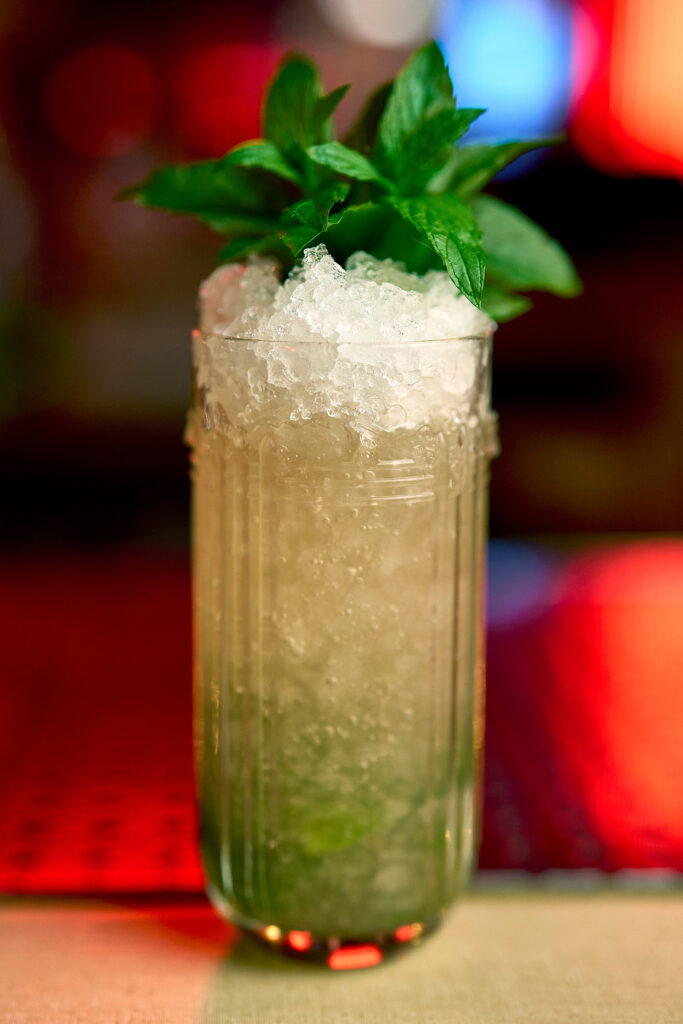
1¾ oz Convite Espadín Esencial Mezcal
¾ oz agave syrup
¾ oz lime juice
8 to 10 leaves of Mexican mint and pineapple mint
Soda water
Add mint to glass. With a barspoon, press the mint on the inside of the glass. Add syrup, juice, and mezcal and mix with the barspoon. Add crushed ice and continue mixing. Top with soda and mix with barspoon. If washline is low, add more crushed ice. Garnish with mint sprigs.
What’s in a Name?
Julieta: Mojado was a word in my household that meant you were drunk. Mojado is to be wet, but you’re wet with rum. If you’re familiar with the Jamaican term “little rum soak,” it’s someone who’s a bit of a drunkard and goes around town.
Ben: This drink is also a Rum Reader first as it’s based on mezcal rather than rum, but we wanted to see how that spirit could work with these ingredients.
Julieta: Convite Espadíns are very accessible. One of the things that I would like to get away from is the assumption that every mezcal is smoky. A lot of them are, and that’s fantastic. But there’s a whole other realm out there that is not. I think that the addition of mezcal to this cocktail shows that mezcal can be very versatile.
The thoughts behind this drink were “what grows together, goes together” and looking at the Mojito as a category. This is hand-picked yerba buena. I feel a little old—when I started bartending, the bags of mint were so inconsistent. We harped and harped on getting big, beautiful, lush mint. But when we did get beautiful-looking mint, the aromatics weren’t there. I wish as consumers we would push back on our vendors: “Hey, can we have more aromatic mint?” That’s the point of the mint, aromatic flavor. Now our commercial mint is big and beautiful. But I wish it had more aroma.
The mint is a type of yerba buena I harvested this morning. The leaf is a little bit thinner, with fewer veins. But you always have the quintessential square stem that is common in mint. And something that I might pull back on when it comes to having the Mojito as a category—maybe using every herb is too radical, maybe instead just every herb with the square stem that is close to the mint family. We can take that.
Davíd: This mint is just totally different from the mint I was chewing on earlier. It has more of a zing to it, which is very nice. It works well with mezcal. Reminds me of coriander seed, if you’ve ever bitten one. It shows how mint can change and allows for tons of different Mojito variations.
Julieta: There’s a not very prominent but very present bitter note. It lays the foundation and the structure for the oils.
Paige: Mint is basically the star of a Mojito. A bad mint will make or break a Mojito. We’ve talked about it when we were talking about the Daiquiri. A Daiquiri is rum, lime, sugar. A Mojito has those components but a Mojito is not a mint Daiquiri. It’s a whole other thing.
Ben: You could make a mint Daiquiri, but it would not taste like this.
Paige: Exactly. I think one thing that’s really prominent in the Mojitos that we had today is they all had different components to them, but the mint was still very much the star. When you’re thinking about a Mojito, you definitely have to have that component.
Last Straw
Fifth Audience Member: How do you feel about putting a straw in a Mojito?
Davíd: Straws, like a lot of things, are for convenience. And there are some people out there who definitely need it, of course. But the majority of the time, it’s not really necessary. I don’t think it’s necessary for a Mojito. Even the way I was enjoying these Mojitos today with crushed ice, I didn’t need it. It took me longer to drink and I think that’s intentional. If I did have a straw in my drink earlier, it wouldn’t have been great. Because without a straw, even when you’re sipping the stuff at the bottom, it’s still getting to the top. It’s getting there, but in spurts. If I had a straw, I would have gotten nothing but syrup and lime with a hint of rum and that wouldn’t have been great.
Ben: With a straw you drink the glass upside down.
Paige: Yeah, exactly.
Davíd: Yeah. I don’t think straws are necessary for most cocktails, unless you go to a tiki bar. But those drinks are curated with straws in mind. Cocktails in general weren’t curated with straws in mind.
Julieta: I think Americans push for that, because you want a cocktail to have the appearance of being full. That’s where that dome of ice on top comes from. When you go to Cuba, they’re not giving you a half-sphere of ice, they’re giving you ice that’s maybe a millimeter down. It’s really accessible without a straw. I think you’re right, with this technique of swizzling and mixing everything together, that first sip and that last sip should parallel each other. But when you are having a Mojito in an ancestral way, there’s granulated sugar at the bottom. You expect that. You expect the first sips to be more lime-centered. Then, as you go through it, it builds up this nice bit of sugar. When it’s expected, you’re almost looking forward to those changes.
Davíd: Put caña in there. It’s your stirring stick, and you can chew on it!
Argelia: I encourage everyone here, when you are making a Mojito, whether it’s the traditional way, maybe even adding a caña, that you tell people why you’re doing it that way—going back to how it would have been made without the soda or a straw, that those choices are intentional.
Julieta: That’s great. To be intentional, not to set an expectation but to have that moment. Sometimes it’s hard because bars are built on speed. But if you have a moment, tell the guest to take a minute, sip from the top, sip from the bottom, and then enjoy it. Talk about how to take your time with a cocktail. As bartenders and folks who create programs, we think of every single step, every quarter ounce, every garnish, and everything has a purpose to it—straw, no straw.
Davíd: I’ve seen people take the straw and shove the mint, the beautiful bouquet, down to the bottom.
Paige: Oh, I’ve seen that for sure.
Davíd: They don’t realize they’re supposed to smell that every single time. Because the majority of taste comes from smell. But that’s where education comes in, and where we come in, as part of the hospitality experience.
Argelia: Amen.


